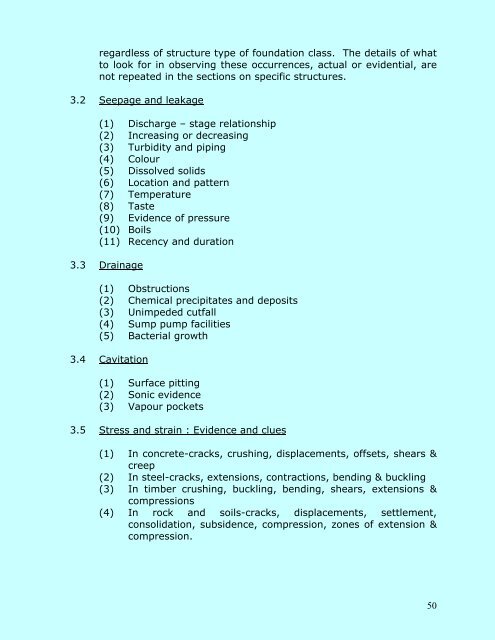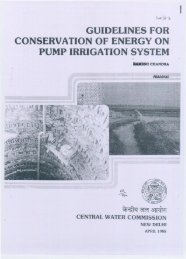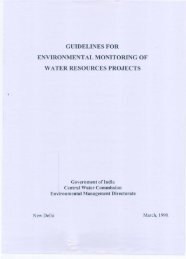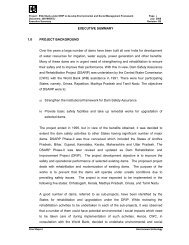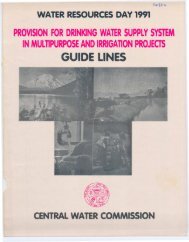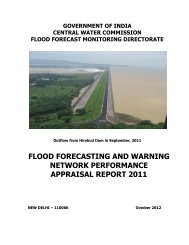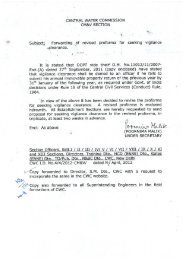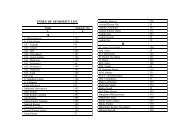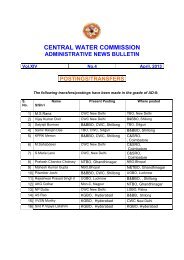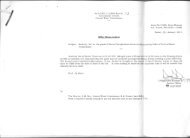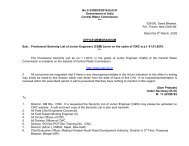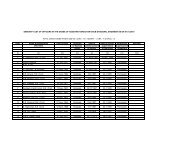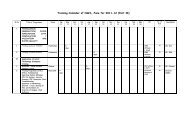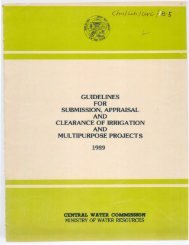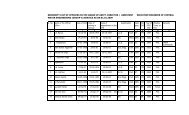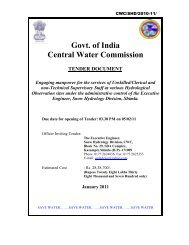Guidelines for Safety Inspection of Dams - Central Water Commission
Guidelines for Safety Inspection of Dams - Central Water Commission
Guidelines for Safety Inspection of Dams - Central Water Commission
Create successful ePaper yourself
Turn your PDF publications into a flip-book with our unique Google optimized e-Paper software.
egardless <strong>of</strong> structure type <strong>of</strong> foundation class. The details <strong>of</strong> what<br />
to look <strong>for</strong> in observing these occurrences, actual or evidential, are<br />
not repeated in the sections on specific structures.<br />
3.2 Seepage and leakage<br />
(1) Discharge – stage relationship<br />
(2) Increasing or decreasing<br />
(3) Turbidity and piping<br />
(4) Colour<br />
(5) Dissolved solids<br />
(6) Location and pattern<br />
(7) Temperature<br />
(8) Taste<br />
(9) Evidence <strong>of</strong> pressure<br />
(10) Boils<br />
(11) Recency and duration<br />
3.3 Drainage<br />
(1) Obstructions<br />
(2) Chemical precipitates and deposits<br />
(3) Unimpeded cutfall<br />
(4) Sump pump facilities<br />
(5) Bacterial growth<br />
3.4 Cavitation<br />
(1) Surface pitting<br />
(2) Sonic evidence<br />
(3) Vapour pockets<br />
3.5 Stress and strain : Evidence and clues<br />
(1) In concrete-cracks, crushing, displacements, <strong>of</strong>fsets, shears &<br />
creep<br />
(2) In steel-cracks, extensions, contractions, bending & buckling<br />
(3) In timber crushing, buckling, bending, shears, extensions &<br />
compressions<br />
(4) In rock and soils-cracks, displacements, settlement,<br />
consolidation, subsidence, compression, zones <strong>of</strong> extension &<br />
compression.<br />
50


